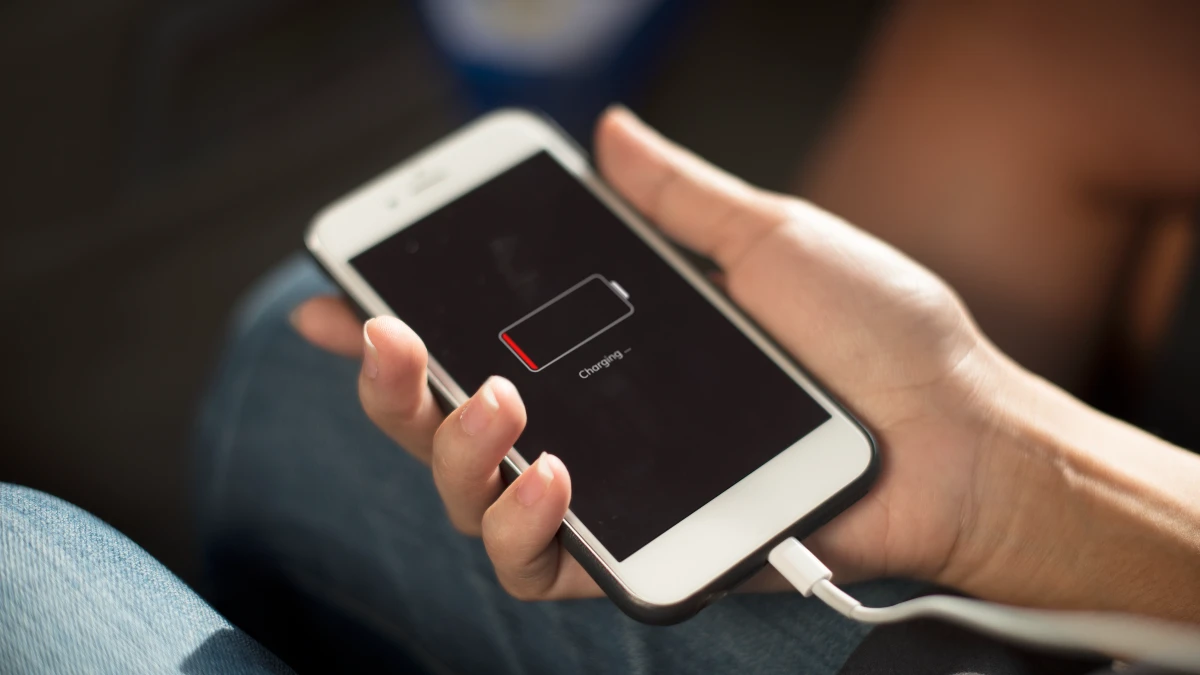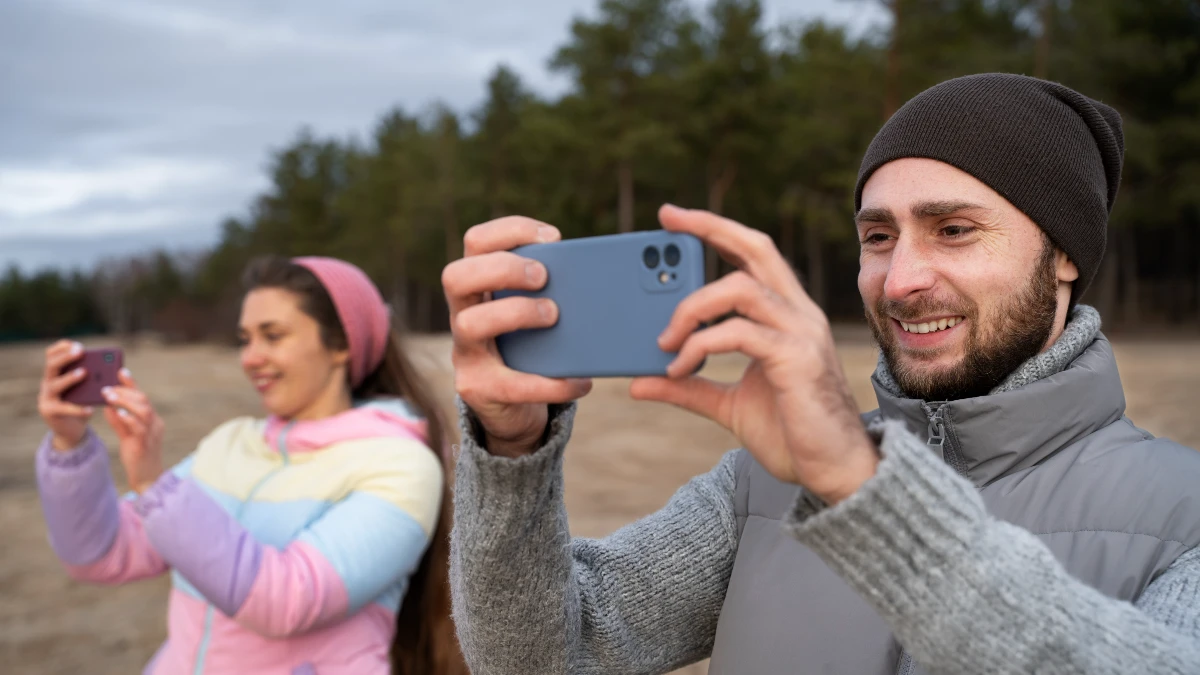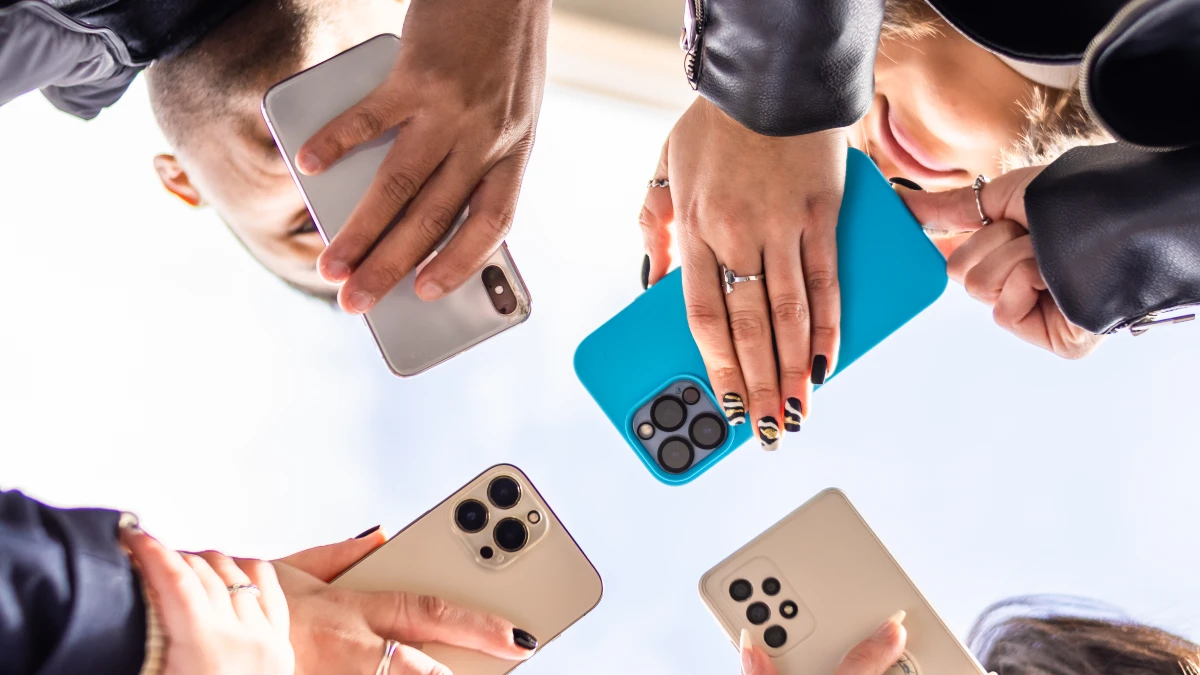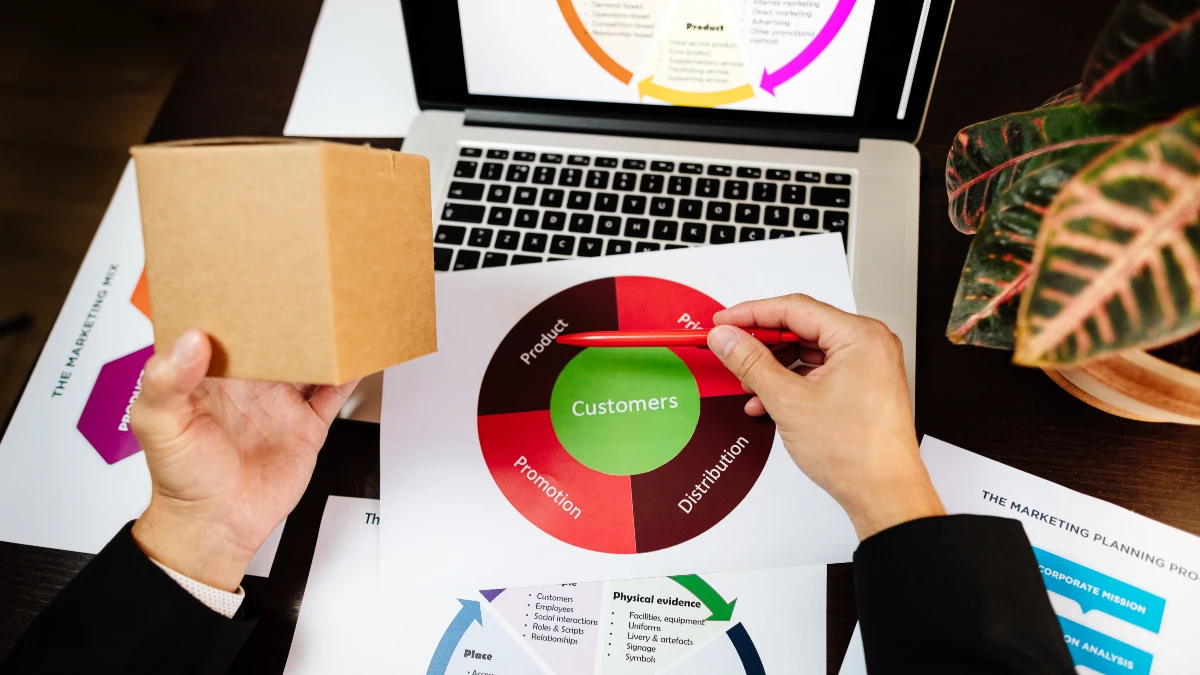“If iPhones are ‘falling behind Android,’ why did 88% of U.S. teens still pick one — and why do carriers keep offering iPhones for $0 with trade-in?” That’s the paradox. You hear (correctly) that Android leads on charging speeds, long-range zoom, and the breadth of on-device AI — and often gives you more for less. Yet iPhones keep selling out and showing up in blue bubbles. Piper Sandler’s latest teen survey pegs iPhone ownership at 88%, and U.S. carriers still run aggressive $0-with-trade-in promos every launch cycle.
In this iPhone vs Android 2025 guide, we’ll separate signal from noise. You’ll see exactly where iPhones are falling behind Android (charging, some camera use-cases, AI feature breadth), where Apple has quietly caught up (120Hz on the base iPhone 17), and why iPhones still win at checkout (ecosystem gravity, resale, retail math). We’ll also explain the practical bits behind Apple ecosystem lock-in so you can decide whether to lean in — or break free. Every claim below is current, test-based, and focused on what you’ll actually feel day-to-day.
Displays & Charging: Did Apple Close the Gap?

Bottom line: Apple finally fixed the display complaint; charging is still the weak spot.
120Hz on the base iPhone 17. Apple brought ProMotion (up to 120Hz) to the standard iPhone 17. That closes the long-standing “60Hz base iPhone” criticism and puts everyday smoothness (scrolling, gaming, UI animations) on par with most mid-to-flagship Androids. If you hated the stuttery feel of older base models, that’s gone.
Real-world charging: iPhone still lags. Independent testing (ChargerLAB, summarized by MacRumors) records ~27–28W peak wired charging on the iPhone 17 using Apple’s common USB-C adapters. In practice, that means ~50% in roughly 25–30 minutes and a full charge closer to an hour, depending on conditions. Many Android phones — including mid-range models — routinely deliver 45–120W with tighter thermal management and explicit “Turbo/HyperCharge” modes. If you often top up in short bursts, this difference is noticeable.
USB-C wasn’t optional. If you’re wondering why every new iPhone now uses USB-C, the EU common-charger law made it a requirement for phones sold in the bloc from Dec 28, 2024; laptops follow in 2026. Apple’s full switch aligned with the deadline.
Value phones already had smooth displays. Even budget Androids have offered high refresh rates for years. A simple example: Moto G Play (2024) lists a 90Hz panel for well under $200 at retail, proving you don’t need flagship money for a fluid UI.
Mid-range sprint: 100–120W is common. If you want truly fast top-ups without paying Ultra money, look at mainstream devices boasting triple-digit wattage. Recent examples include Poco F7 Ultra with 120W wired charging (Android Authority/TechRadar/The Verge coverage). Phones in this class regularly hit 0–100% in ~30 minutes, sometimes faster with bundled bricks.
Actionable takeaways
- You value smoothness but don’t game hard: Base iPhone 17 is now fine — 120Hz is standard. Apple
- You fast-charge daily or juggle long days: Favor Android models with 80–120W. The time savings compound.
- You use lots of accessories: USB-C is universal now across both camps; cable friction is basically gone in 2025.
Cameras: Where Android Leads (and Where iPhone Still Wins)

Zoom kings vs video champs. In 2025 rankings from DXOMARK, the very top camera phones tend to be Huawei and Vivo for stills and long telephoto/zoom flexibility, while Apple’s latest iPhones continue to earn “best-in-class video” praise. Translation: if you shoot travel zoom, wildlife, stadium seats, Android leaders feel a tier ahead; if you shoot kids, concerts, and social video, iPhone remains the safer, more reliable bet.
Who’s on top right now? DXOMARK’s 2025 Smartphone Ranking shows an elite cluster featuring Huawei Pura 80 Ultra, Oppo Find X8 Ultra, Apple iPhone 17 Pro, and Vivo X200 Ultra. The nuance: Vivo and Huawei often lead zoom and portrait detail, while Apple dominates video stabilization, exposure, and color consistency across lenses — the stuff that keeps clips looking clean without fiddling.
What that means in the real world
- iPhone (video reliability): If your priority is press-record and trust the footage, iPhone 17 Pro/Pro Max are still the easiest recommendation for creators who publish quickly — fewer weird artifacts, more consistent skin tones, and top stabilization.
- Android (zoom versatility): Phones like Vivo X200 Ultra deliver cleaner 5×–10× reach with stronger detail retention and lower noise, especially in daylight; night zoom is improving fast but varies by brand.
Buyer cheatsheet
- Sports parents / concertgoers: Favor Vivo/Huawei/Oppo flagships with periscope zoom. You’ll frame faces from the cheap seats.
- Vloggers / Reels-first creators: Favor iPhone 17 Pro/Max for stabilized, color-true video with minimal tweaking.
AI Features: Apple Intelligence vs Gemini & Galaxy AI

State of play (2025): Apple made big strides with Apple Intelligence (on newer iPhones/iPads/Macs), but Android still offers the widest AI toolbox today — especially in Photos editing, search-from-screen, and live translation. Apple’s set is growing through 2025 with expanding language support and tighter on-device integration.
Apple Intelligence (2025)
- What you get: System-level writing tools, image generation (Genmoji/Image Playground), suggested notifications, and on-device understanding that respects app context. The pitch is privacy-forward and integrated into Messages, Notes, and system UI — less “app hopping,” more native polish.
- Language rollout: Apple lists multiple languages in beta as of September 2025, with more locales slated to join over the year. Check Apple’s availability page before promising features to clients or teams in non-English markets. (Apple Support/Newsroom.) Apple Support+1
- Reality check: Some headline features are staged or region-limited. If your workflow depends on a specific language or API handoff, verify device and locale support first.
Gemini on Android (Google)
- What you get: Conversational photo editing in Google Photos now works on more Android phones — you can say “Help me edit” and have Gemini propose or perform multi-step edits by voice or text. This moved beyond the Pixel 10 in late 2025.
- System breadth: Google keeps pushing Circle to Search enhancements, cross-app actions, and “Gemini Live” voice experiences that span apps and devices — especially on the latest Samsung and Pixel models.
Galaxy AI (Samsung)
- What you get: Live Translate for in-call, two-way translation (works in the phone app), Interpreter mode, and tight Notes/Keyboard assists. These features shipped broadly on S24 and expanded via later One UI releases, with updated models in 2025 (S25 series) continuing the push.
- Practical caveats: Live Translate is tied to the Samsung Phone app, requires a network/Samsung account, and some languages need offline packs. Some regions note the features are free through end-2025, with details beyond that to be confirmed.
Actionable takeaways
- You want AI that saves minutes every day, today: Android’s Photos voice edits, Circle to Search, and Live Translate are ready and widely shipped — great for travelers, students, and creators.
- You’re deep in Apple apps and privacy is paramount: Apple Intelligence is compelling, but check language and device support before you commit a team workflow to it.
Longevity & Updates: Apple’s Advantage Isn’t What It Used to Be

For years, the safe assumption was: buy iPhone for the longest software support. In 2025, that’s no longer automatic. Google publicly committed that Pixel 8 and newer get 7 years of Android OS upgrades and 7 years of security updates — the full stack, not just patches. (Google’s official blog and support page.) blog.google+1 Samsung followed by promising seven generations of Android upgrades and seven years of security updates for the Galaxy S24 family and newer, then expanded that promise across more 2025 models.
Apple doesn’t publish a fixed “years” figure; historically, iPhones receive many major iOS releases followed by additional security patches. But the truth is that the practical gap has narrowed: if you buy a current Pixel or Galaxy flagship, you’re now looking at “software updates 7 years” on paper — directly comparable to what most buyers used to cite as Apple’s edge.
What this means when choosing in 2025 (Android vs iPhone support):
- If you plan to keep a phone 5–7 years, a Pixel 8/9 or Galaxy S24/S25 now matches (and clearly declares) the longevity you want. blog.google+1
- If you’re considering other Android brands, policies still vary a lot. Some promise 3–4 OS versions and 4–5 years of patches; some don’t publish at all. Check the brand’s update policy before you buy.
- If you’re in the Apple ecosystem already, keep in mind Apple’s track record with long support is strong — just understand it’s less of a unique selling point than it used to be.
Decision tip: treat updates as part of total cost of ownership. A device with 7 years of updates is easier to sell later and safer to hand down, even if the upfront price is higher.
Ecosystem, Lock-In & Why iPhones Still Sell

If iPhones are falling behind Android on certain specs, why do they still dominate U.S. checkout lines? Start with network effects. Piper Sandler’s Spring 2025 “Taking Stock With Teens” survey reports 88% of U.S. teens own an iPhone, and upgrade intent remains high. That concentration shapes group chats, AirDrop norms, and accessories — it’s social gravity.
Messaging is evolving but still not neutral. Apple added RCS in iOS 18/26 era, improving photo/video quality, typing indicators, and read receipts in cross-platform chats. But Apple’s own support docs state RCS messages are not end-to-end encrypted (unlike iMessage), and they still appear green. Standards bodies (GSMA) and Google have discussed interoperable E2EE for RCS, but as of late 2025, Apple’s RCS implementation lacks E2EE. Translation: RCS narrows the feature gap, not the social one.
Wearables help Apple ecosystem lock-in. Officially, to set up and use an Apple Watch, you still need an iPhone (XS or newer) running current iOS; “Family Setup” lets you provision a child’s cellular Watch, but an iPhone is required for activation and management. Third-party watches can work with iPhone (e.g., Garmin, Fitbit), yet full deep integration remains Apple Watch-centric.
Then there’s money. On average, iPhones hold value better — and while that gap is narrowing as Samsung and Google improve, multiple resale trackers still place iPhone at the top for value retention. That stronger resale pool plus aggressive carrier promos creates “cheap to own” math. SellCell’s 2025 data notes Samsung’s AI-era flagships are closing the gap, but iPhone remains ahead overall; TechRadar echoes the same trend.
Carriers amplify it. In September 2025, T-Mobile and AT&T ran headline offers like “iPhone 17 on us” or “iPhone 17 Pro for $0” with eligible trade-ins and specific unlimited plans — including bill-credit structures over 24–36 months. If you were already going to carry an unlimited plan, these iPhone trade-in deals are compelling.
Actionable ways to reduce lock-in (if you’re considering Android):
- Move chats you care about to cross-platform apps (WhatsApp/Signal) so your social graph doesn’t dictate hardware.
- Choose accessories that are USB-C / Bluetooth-standard (buds, chargers, trackers with multi-platform apps).
- If you want a smartwatch on iPhone but don’t want Apple Watch, verify features first; some brands (e.g., Garmin) work well on iOS, but not all Wear OS watches are iOS-compatible. (Practical experience + vendor docs.)
- If you stay on iPhone, stack the maths: trade-in credits + strong resale typically make ownership cheaper than the sticker price suggests.
Market Reality Check: Shipments, Share & Momentum

The scoreboard in 2025 is messy unless you split global vs U.S. Globally, Android continues to dominate usage share (roughly 72% vs iOS around 27–28%, per Backlinko’s consolidation of tracking sources). In the U.S., it’s the reverse: iOS leads with ~57–58% share. That’s why your local perception may not match the world’s reality.
On shipments, the year’s story has been Android vendors regaining momentum while Apple saw pressure in early 2025, especially in China. IDC data reported by Reuters shows Apple iPhone shipments down ~9% YoY in China for Q1 2025, with subsidies favoring sub-¥6,000 devices lifting Android OEMs like Xiaomi. Other IDC notes during 2025 flag macro uncertainty and a slower upgrade cycle as headwinds for premium devices.
That said, the picture can swing quarter-to-quarter. In some periods, Counterpoint Research (via Reuters) still showed Apple taking the #1 global vendor spot by units, depending on timing of launches and promotions. The practical takeaway: share moves with promotions and product cycles, but the installed base and platform share change more slowly.
How to read this as a buyer:
- Smartphone market share 2025 ≠ your experience. If you live in the U.S., your friend group likely skews iPhone even when global stats say Android rules.
- Apple shipments 2025 wobbling doesn’t equal a weak product; it often reflects pricing, regional subsidies, and cycle timing. If you’re value-hunting, Android flagships may be more aggressive on discounts — but iPhone’s trade-in ecosystems keep the effective cost closer than it looks.
Conclusion
In 2025, the claim that “iPhones are falling behind Android” is half-true. Apple closed big gaps (the 120Hz display is now standard on the base iPhone 17), but still trails on fast charging, long-range zoom, and the breadth of live AI tricks. Meanwhile, Android rivals now match or exceed Apple on years of updates — with clear 7-year commitments from Google and Samsung — while iPhone keeps winning on ecosystem convenience, resale value, and retail offers.
If you prioritize battery + fast charging, big zoom, and bleeding-edge AI, go Android. If you value video reliability, seamless accessories, trade-in value, and support, an iPhone 17 still makes sense. Share your use-case in the comments and I’ll recommend three phones.
